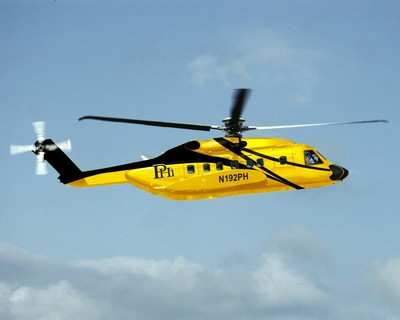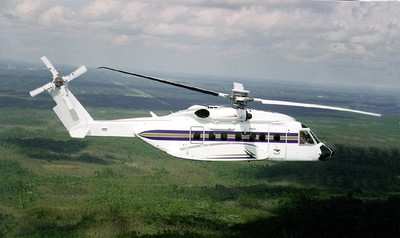Tue, Dec 29, 2020
AD 2020-26-13 Prompted By Seven Incidents Of Fatigue Cracks In The Horizontal Stabilizer Root Fitting
The FAA is adopting a new airworthiness directive (AD) for Sikorsky Aircraft Corporation (Sikorsky) Model S-92A helicopters.

This AD was prompted by seven incidents of fatigue cracks in the horizontal stabilizer root fitting FWD (forward root fitting). This AD requires establishing the life limit of certain part-numbered forward root fittings, establishing the life limit of certain part-numbered stabilizer strut fittings, repetitively inspecting certain parts, and depending on the inspection results, removing parts from service. The FAA is issuing this AD to address the unsafe condition on these products. This AD is effective February 1, 2021.
Supplementary Information: The FAA issued a notice of proposed rulemaking (NPRM) to amend 14 CFR part 39 by adding an AD that would apply to Sikorsky Model S-92A helicopters with certain part-numbered horizontal stabilizer assemblies (stabilizer assembly), certain part-numbered forward root fittings, or certain part-numbered stabilizer strut fittings installed. The NPRM published in the Federal Register on September 17, 2020 (85 FR 58007). The NPRM was prompted by seven incidents of fatigue cracks in forward root fittings. Fatigue cracking in a forward root fitting degrades the load path and increases the load on other assembly parts, particularly at the aft horizontal stabilizer attachment points.

The NPRM proposed to require establishing the life limit of certain part-numbered forward root fittings and certain part-numbered stabilizer strut fittings. The NPRM also proposed to require repetitively inspecting each stabilizer assembly attachment bolt and barrel nut set, each forward root fitting, each attachment fitting including the bolt holes and fastener holes, condition of the fasteners, and each attachment fitting mating surface. Depending on the inspection results, the NPRM proposed to require removing parts from service. Finally, the NPRM proposed to prohibit installing certain stabilizer assemblies on any helicopter. The FAA is issuing this AD to address the unsafe condition on these products.
More News
Also: Vertical Flight Society, NBAA Maintenance Conference, GA Honored, AMT Scholarship For the first time, students from Embry-Riddle’s Daytona Beach, Florida, campus took t>[...]
Hazardous Weather Information Summary of significant meteorological information (SIGMET/WS), convective significant meteorological information (convective SIGMET/WST), urgent pilot>[...]
"The need for innovation at speed and scale is greater than ever. The X-62A VISTA is a crucial platform in our efforts to develop, test and integrate AI, as well as to establish AI>[...]
(FAA) Inspector Observed That Both Fuel Tanks Were Intact And That Only A Minimal Amount Of Fuel Remained In Each Analysis: According to the pilot, approximately 8 miles from the d>[...]
“Pyka’s Pelican Cargo is unlike any other UAS solution on the market for contested logistics. We assessed a number of leading capabilities and concluded that the Pelica>[...]
 Airborne-Flight Training 05.09.24: ERAU at AIAA, LIFT Diamond Buy, Epic A&P
Airborne-Flight Training 05.09.24: ERAU at AIAA, LIFT Diamond Buy, Epic A&P ANN's Daily Aero-Term (05.07.24): Hazardous Weather Information
ANN's Daily Aero-Term (05.07.24): Hazardous Weather Information Aero-News: Quote of the Day (05.07.24)
Aero-News: Quote of the Day (05.07.24) NTSB Final Report: Cessna 150
NTSB Final Report: Cessna 150 Aero-News: Quote of the Day (05.08.24)
Aero-News: Quote of the Day (05.08.24)




